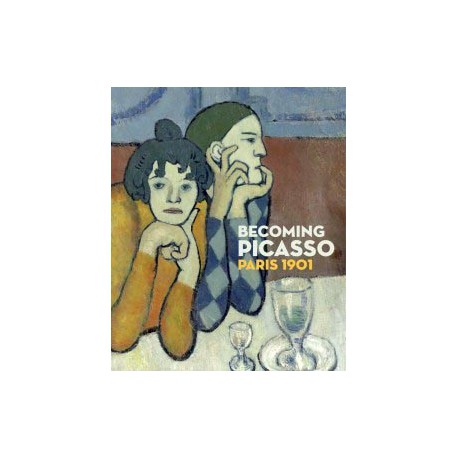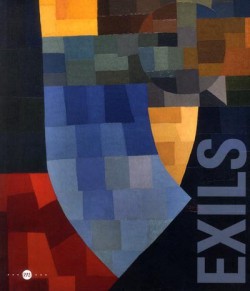Aucun produit
Produit ajouté au panier avec succès
Il y a 0 produits dans votre panier. Il y a 1 produit dans votre panier.
Catalogue d'exposition
- Nouveautés
- Catalogue d'exposition
- Sélection Fêtes
- Prix réduits
- Idées Cadeaux
- Editions Bilingues & inter.
- Livres d'art pour enfants
- Histoire de l'Art
- Peinture
- Architecture
- Sculpture
- Dessin Gravure
- Photographie
- Art contemporain
- Arts Décoratifs Design
- Techniques des Arts
- Critique
- Beaux livres
- Civilisations
- Revues partenaires

Catalogue d'exposition Becoming Picasso, Paris 1901 - Courtauld Gallery, London
This fully illustrated catalogue, with essays by leading and emerging scholars in the field of Picasso studies, tells the remarkable story of Pablo Picasso's breakthrough year – 1901 – as an artist.
Produit indisponible
| Référence | 9781907372452 |
| Artiste-Genre | Pablo Picasso (1881-1973) |
| Auteur(s) | Barnaby Wright |
| Editeur(s) | Holberton |
| Format | Paperback |
| Nb. de pages | 160 |
| Langue | English |
| Dimensions | 260 x 216 |
| Technique(s) | 120 colour illustrations |
| Date parution | 07/03/2013 |
| Epoque | XXe siècle |
| Afficher le lien de contact | Oui |
| Musée | Courtauld Gallery, London |
Accompanying the exhibition, Becoming Picasso: Paris 1901, at The Courtauld Gallery, London (14 February – 26 May 2013).
These major paintings will be reunited from public and private collections internationally, making the catalogue a unique opportunity to experience Picasso's very first masterpieces.
1901 was a momentous and turbulent year for the nineteen-year-old Picasso. He spent the first part of it in Madrid but his sights were firmly set upon becoming a great painter in Paris, the capital of the arts.
Picasso left for Paris in May with around twenty paintings and little over a month to produce enough wotk to fill his Vollard exhibition. Once there, he painted unstintingly, sometimes finishing three canvases in a single day. The canvases express Picasso's desire to take on and reinvent the styles and motifs of his artist heroes, such as Van Gogh, Degas and Toulouse-Lautrec. The Vollard show was a success and launched Picasso's career in Paris. But despite this he immediately took his art in new directions.
The suicide of his closest friend, Carlos Casagemas, that same year inspired Picasso to produce a new group of subjects. They constitute one of his greatest early achievements and with them he found his own artistic voice. Typically muted in tone with strong outlines, anticipating his famous 'blue period', the paintings often depict isolated figures in sparse surroundings, such as Child with a Dove, and include an extraordinary series of drinkers at café tables, such as Harlequin (The Metropolitan Museum of Art, New York) and Absinthe Drinker (The State Hermitage Museum, St Petersberg).
Produits déjà vus








